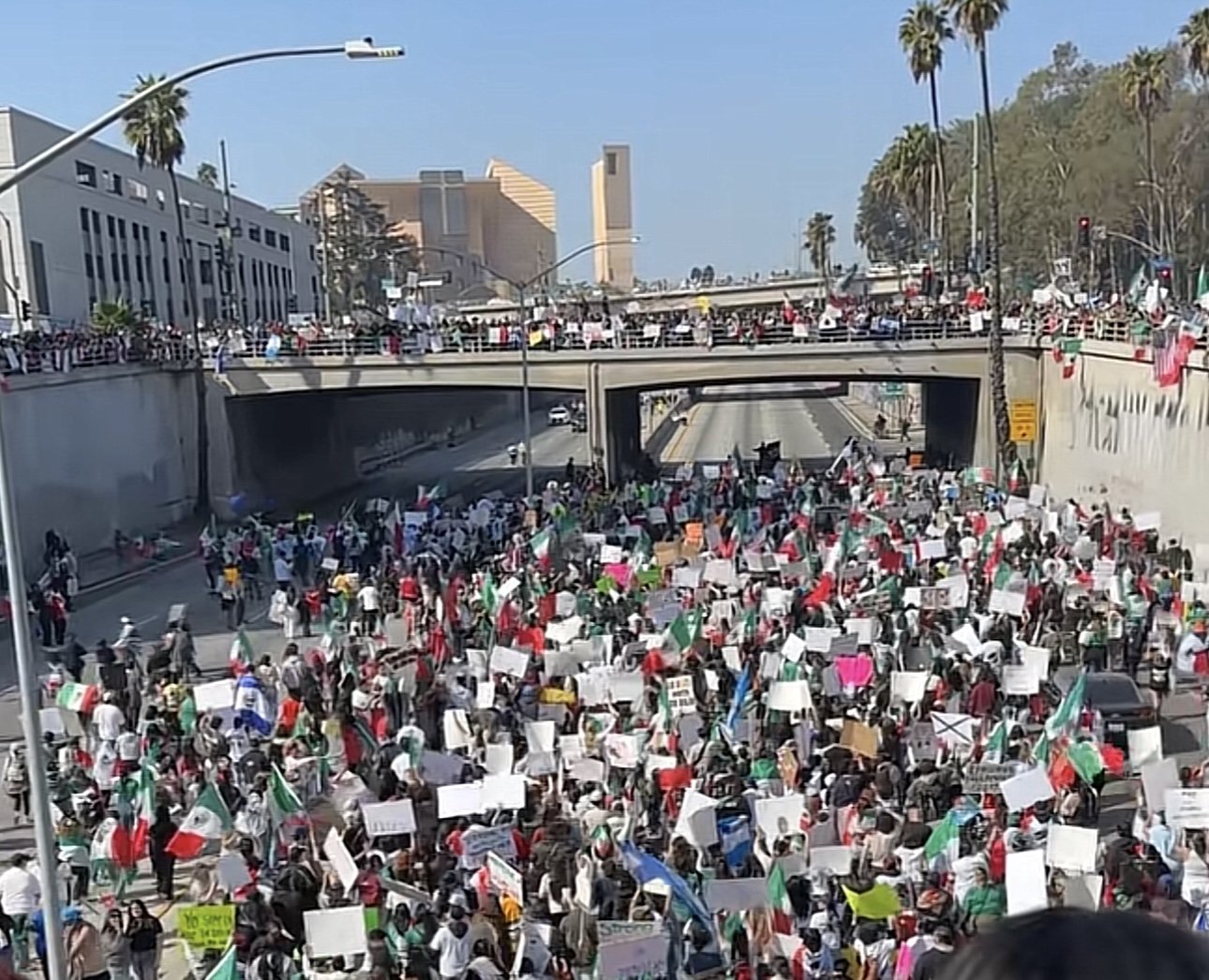Mass Protests Take Over Los Angeles Freeways in Pushback Against Government Policies
Los Angeles has become the epicenter of widespread protests, with thousands of demonstrators taking to the streets and, in a bold move, shutting down multiple freeways to amplify their message. The city, known for its relentless pace and constant motion, was forced to pause as protesters flooded U.S. Route 101, bringing traffic to a standstill for hours.
It started downtown, where marchers gathered near Olvera Street, carrying banners and chanting for immigration reform and justice. What began as a peaceful demonstration quickly escalated when protesters moved onto the freeway—a deliberate act designed to demand attention and force city officials and the nation to confront the growing frustration over recent government policies.
The 101 freeway takeover was as symbolic as it was disruptive. For Angelenos, the freeways are more than just arteries of traffic; they are the pulse of the city. To occupy them is to disrupt the very fabric of Los Angeles life. Protesters used this space to declare their defiance, transforming lanes usually filled with cars into a platform for their voices.
While the initial protest was sparked by the government’s intensified immigration enforcement policies, the movement has expanded to encompass broader demands for equity and justice. Over the past several days, protests have erupted throughout the city, from downtown to neighborhoods across Los Angeles County.
In Pasadena, students from several high schools staged walkouts, marching to Pasadena City Hall to protest the recent ICE actions and call for an end to family separations and detentions. Approximately 200 students participated in the peaceful demonstration, adding to the growing momentum of youth-led activism that has become a defining feature of this movement.
Back in downtown Los Angeles, the protests continued late into the night, with more demonstrators gathering outside government buildings and blocking major intersections. Police monitored the situation but reported no arrests. Organizers have vowed to keep the protests going, saying their message will not be silenced.
Los Angeles has seen its share of political uprisings, but this latest wave feels urgent and deeply personal for many. The takeover of public spaces—especially the freeways—signals a new level of resistance, one rooted in the city’s long history of activism but clearly shaped by today’s political climate.
What’s happening on the streets of Los Angeles is more than a demonstration; it’s a declaration. The people who gathered on Route 101 didn’t just want to disrupt traffic—they wanted to remind the world that silence is not an option. They made it clear that this city, one built by diverse communities with deep roots, will always rise to protect those at risk.
For now, the protests continue, and the freeways, once again, have become ground zero for a city demanding to be heard. What happens next will be crucial—not just for Los Angeles, but for the growing movement that stretches far beyond its borders.

